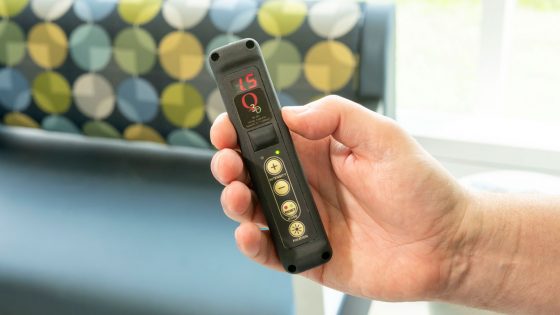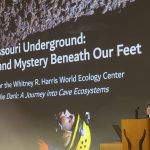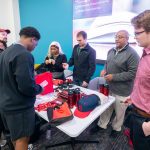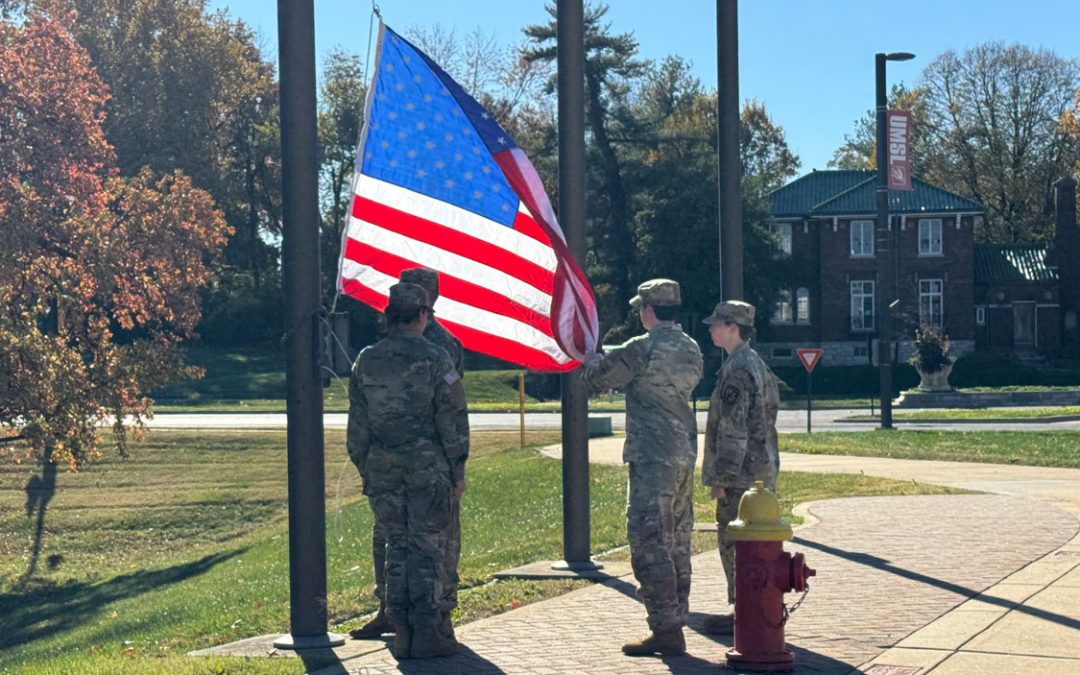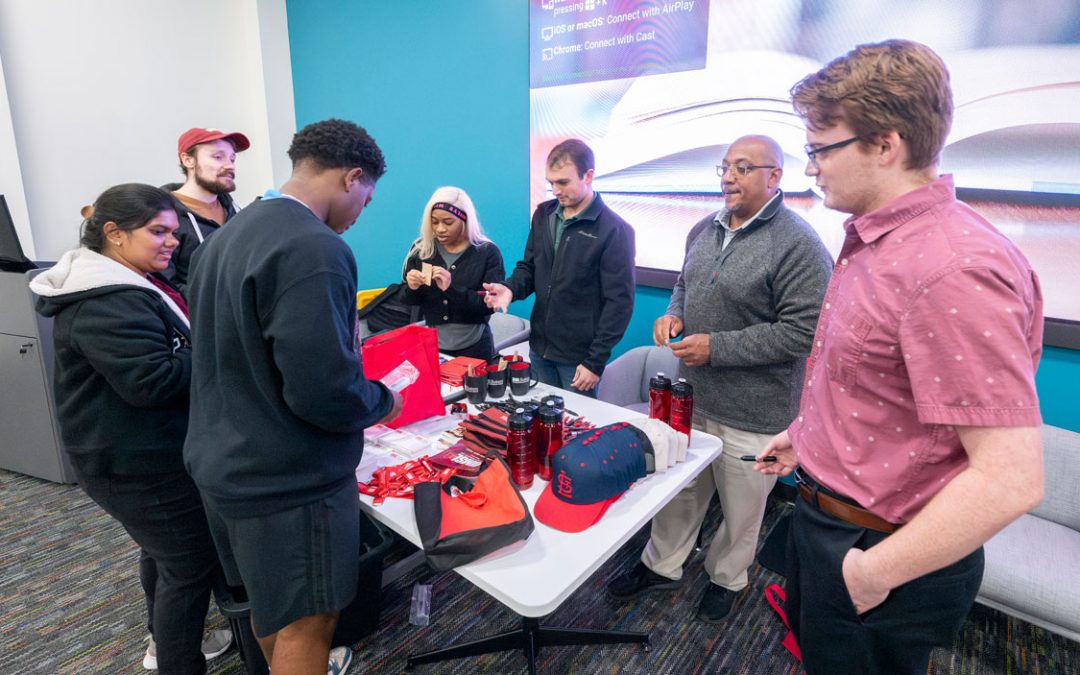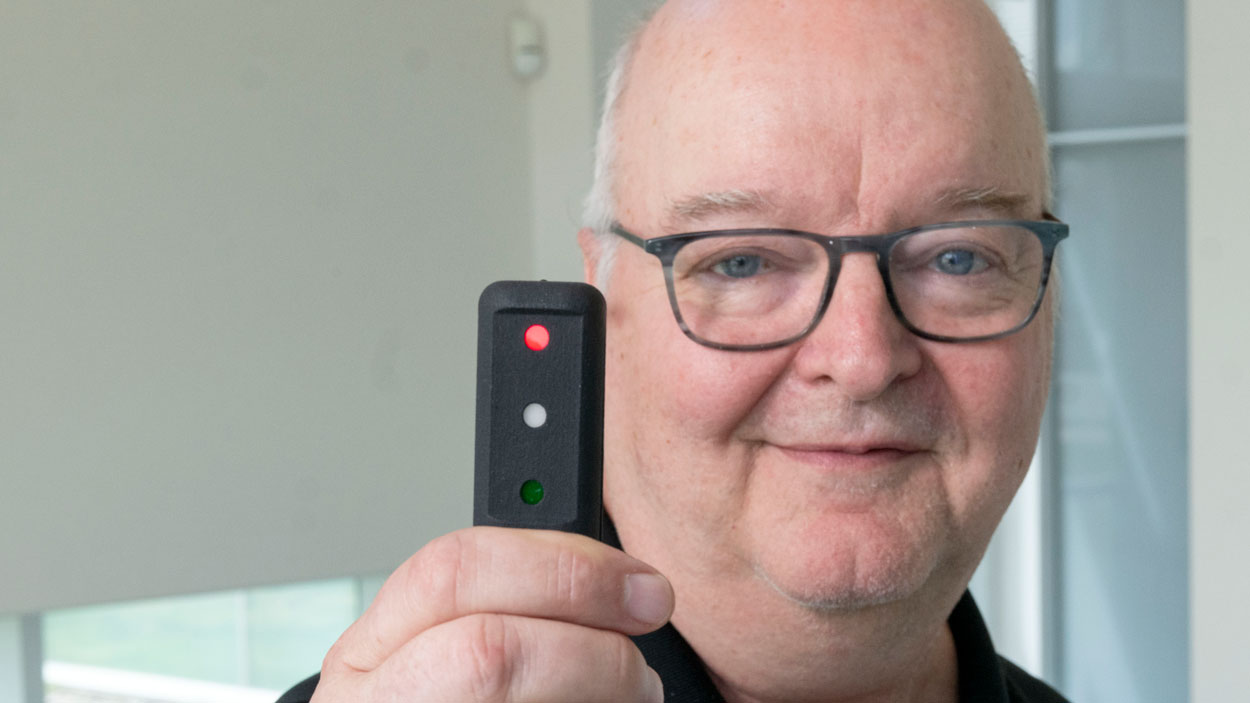
Carl Bassi, a Curators’ Distinguished Teaching Professor in the College of Optometry at the University of Missouri–St. Louis, holds up the Quantitative Three Dot testing device. The device helps with early detection of amblyopia. (Photos by Derik Holtmann)
It’s estimated that as much as 5% of children worldwide experience amblyopia, often referred to as “lazy eye,” a vision condition where the brain doesn’t receive clear visual signals from one eye and learns to rely on the other eye.
The condition typically develops between birth and age 7 and leads to blurred vision and poor depth perception among other vision problems. By the time a child is diagnosed via current testing, it can be too late for them to show significant improvement with treatment.
That could be changing thanks to a new device developed by Curators’ Distinguished Teaching Professor Carl Bassi and his research collaborators, Michael Howe and Wayne Garver, in the College of Optometry at the University of Missouri–St. Louis. The trio developed the Q3D diagnostic testing device, a handheld tool being licensed by Forus Health that uses the Quantitative 3 Dot Test to detect visual suppression. They hope to make it available for pediatricians and optometrists this year.
“I really do think it’s going to be something that’s going to help a lot of people,” Bassi said, “I do think it can make a difference in the world.”

Curators’ Distinguished Teaching Professor Carl Bassi (center) worked with collaborators Wayne Garver and Michael Howe to developed the Q3D testing device being licensed by Forus Health.
Bassi joked that the device has been in development “since the Paleozoic Era.” He first came up with the idea in the early 1990s, shortly after joining the UMSL faculty, while examining the vision of Alzheimer’s patients.
He and his colleagues were modifying existing pediatric techniques to try to gauge binocular function – how well both eyes work together to allow individuals to see things in depth. One main screening test was the Worth Four Dot Test, first introduced by Claud Worth to measure binocularity in 1903. It hasn’t evolved much in the years since.
To perform the test, a patient dons red and green glasses and is shone red and green lights with a flashlight. If they have vision suppression in one of their eyes, they won’t be able to see either the red or green lights while wearing the glasses.
“The problem is it’s not quantitative,” Bassi said. “It just gives you this gross kind of yes or no, and you have to have a severe problem before you’re able to pick anything up with that.
“My idea very early on was to try to change the intensity of these lights independently. We had to wait for a long time until technology kind of caught up what we wanted to do because it took the development of not only LED lights but super bright LED lights that were needed to do the test right.”
By being able to alter the intensity of the lights, Bassi and his colleagues have been able to detect vision suppression associated with amblyopia much sooner.
In 2014, Bassi and his colleagues won a $50,000 FastTrack award from the University of Missouri System to create working prototypes.
After first being studied at the UMSL Eye Care clinic, Q3D underwent a significant clinical trial with more than 300 patients at Cardinal Glennon Children’s Hospital under the direction of Dr. Oscar A. Cruz and Dr. Bradley Davitt. Results from the clinical trial showed that Q3D can be used on patients as young as 3 years old and is a significantly more sensitive predictor of visual suppression than current methods, detecting four times the number of impairments in patients with amblyopia as the Worth Four Dot Test.
“At Forus Health, our mission has always been to enable early, equitable and impactful eye care,” said K. Chandrasekhar, the founder and CEO of Forus Health. “This commitment drives every innovation we pursue and every partnership we form, as we strive to make advanced eye care accessible to all, regardless of geography or socioeconomic status. Licensing the Q3D technology aligns perfectly with that vision. It represents a significant step forward in our ongoing efforts to equip clinicians with cutting-edge tools that enhance diagnostic accuracy and patient outcomes. By bringing a more sensitive and accessible diagnostic tool for amblyopia into the hands of clinicians, we have the opportunity to change the trajectory of vision outcomes for millions of children worldwide.
“We are proud to collaborate with the team at UMSL to take this innovation from lab to life –transforming early detection into early intervention.”
Earlier detection allows eye care professionals greater opportunity to intervene and have an impact on a patient’s vision and quality of life. Treatments can include corrective eyewear – either glasses or contact lenses; patching; atropine eye drops that temporarily blur vision in the stronger eye, thereby forcing the brain to rely on the weaker eye; vision therapy; and surgery to correct strabismus, or a misalignment of the eyes.
The university has invested in patent applications to protect this intellectual property, resulting in issued patents in multiple countries including in the United States.
“We’ve worked diligently over many years to get the Q3D licensed and on the market,” says Tamara Wilgers, director of the university’s technology transfer office. “Having a smaller market size can make that difficult. However, this device is so important for helping kids around the globe to see, the university continues to support its commercialization.”
Forus Health’s license is non-exclusive, so the technology transfer office is continuing to identify other interested distributors and manufacturers to license the device for broader distribution around the world.
It’s been a long wait for Bassi to see Q3D get to this point. But he said his friend and entrepreneur Ray Barrett – with whom he developed the Triple Track golf ball licensed by Callaway in 2019 – taught him persistence.
He’s grateful people can benefit from access to the device.
“Once it’s out in the hands of other clinicians, I think we’re going to find there may be other uses for the Q3D,” Bassi said. “We have talked about its potential use in assessing patients with optic nerve disease or with traumatic brain injury.”
If you are an UMSL researcher and have a possible invention, contact UMSLtechtransfer@umsl.edu to discuss patenting and bringing the invention to those who need it most.

